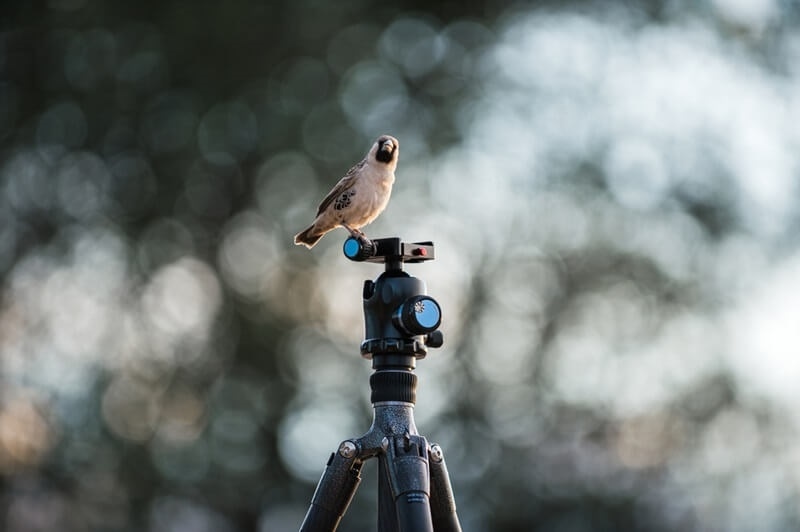
Photographing a bird in flight takes considerable skill, patience, and good bird photography lenses. Whether shooting images of hummingbirds at your backyard feeders or photographing an eagle in the wild, the lenses you use will have a significant impact on the sharpness, compression, and photographic impact of your images.
While professional gear can be expensive, there are numerous affordable telephoto lenses for birds and cheap lenses that will deliver impressive results without stretching your budget.
In this article, you will discover the best options for enthusiasts, beginners, and professionals alike, with respect to low-cost gear used in wildlife photography, and some practical ways to elevate your shots even when using bird photography on a low budget.
You want to capture birds effectively, which requires reach, sharpness, and fast autofocus in a lens. The majority of professional wildlife photographers use telephoto lenses, but today's market boasts a variety of bird photography lenses that suit different experience levels and budgets.
Focal length is the most critical factor in a bird photography lens. Birds are very skittish and hardly approachable, which demands lenses with images of between 300mm to 600mm. With a 400mm lens, for example, you usually can keep your distance and still pick up a lot of detail in the feathers.
A large aperture, say, f/4 or f/5.6, opens up to allow more light to pass through, necessary if you want to freeze fast-moving subjects. Even in bird photography, cheap lenses look for consistent performance in case of poor lighting.
Birds don't sit still for long. Fast AF and optical stabilization can make a big difference in your keeper rate. Some budget telephoto lenses for bird photography feature high-speed AF motors and optical stabilization - features once reserved for the highest of high-end gear.

For those without a tight budget, there are brands like Canon, Nikon, and Sony, offering premium lenses for bird photography, including:
These lenses are outstanding in clarity, contrast, and speed of autofocus. However, they are mostly over $10,000, making them quite impractical for a starter.
A good balance of cost and performance for photographers can be found in mid-range, cheap lenses such as the Sigma 150–600mm f/5–6.3 Contemporary or Tamron 150–500mm f/5–6.7 Di III VC VXD. These options offer great:
Both lenses behave very well for a budget wildlife photography setup, offering sharp and detailed shots even in difficult conditions.
New photographers can start with bird photography with low-cost equipment such as the Canon EF 70–300mm f/4–5.6 IS II USM or Nikon AF-P 70–300mm f/4.5–5.6E ED VR. While not as powerful as their high-end counterparts, these lenses deliver decent reach and image quality for around $500 or less.
These could be great options for entry-level photography with mirrorless systems: Sony 70-350mm f/4.5-6.3 G OSS and Fujifilm XF 70-300mm f/4-5.6 R LM OIS WR. Both lenses are lightweight, fairly inexpensive, and excellent to learn about telephoto techniques.
The investment in affordable telephoto lenses for birds lets the photographers focus on the development of their photographic skills, not gear envy. Budget telephoto lenses nowadays marry portability with quality optics and stabilization-the quintessential ingredients for a great wildlife capture.
Having superior equipment is not the only way to achieve stunning wildlife images. As a rule, working with low-cost equipment to photograph birds requires practice, timing, and imagination.
Sometimes, early morning or late afternoon will have softer, warmer light, which can add feather detail while avoiding the more severe shadows you often get with most cheap bird photography lenses with smaller apertures.
As for mode, we always shoot in Manual or Aperture-priority mode, which are the more preferred settings.
When trying to freeze motion, you want relatively fast shutter speeds, so you probably want to have a shutter speed of at least 1/1000 of a second and change the ISO values for suitable exposures.
These techniques ensure sharpness even with very cheap lens setups for beginning bird photography.
Patience brings rewards in bird photography. Move slowly, dress in disguise where necessary, and plan to wait for birds to get closer! Your greatest photographs will come from your understanding of behavioral patterns, not simply clicking the camera shutter.
Tripods and monopods assist in steadying budget-priced telephoto lenses on birds. Even the most basic tripod significantly improves sharpness on long shoots.
You don't have to break the bank for a complete wildlife kit. Here are the ways to acquire budget-friendly wildlife photography equipment that pairs well with your lens purchase:
Combined, this gear will provide the significant piece needed to shoot active bird scenes at lower costs than professional-level prices.
If you are just starting with wildlife photography, begin with the simple things. A cheap lens for bird photography teaches essential lessons in tracking, focusing, and framing.
Practical Tips:
Maintaining your gear to keep it lasting and working consistently is vital in a niche like bird photography. Here's the best way to take care of bird photography lenses:
Making sure to maintain your budget telephoto lenses to photograph birds can ensure years of reliable performance.
You do not need a lens that costs $10,000 to make a hawk look graceful in flight or to show the sparkle from a hummingbird's wings. With the right bird photography lenses, commitment, light knowledge, and bird behavior, you can get some great shots of birds, even using your cheapest bird photography lenses and wildlife photography equipment.
Start small, shoot often, and upgrade your photography equipment as your kid evolves. Clearly, the heart and soul of bird photography is not spending lots of money; it is connecting with nature and translating that connection into extraordinary photographs.
This content was created by AI